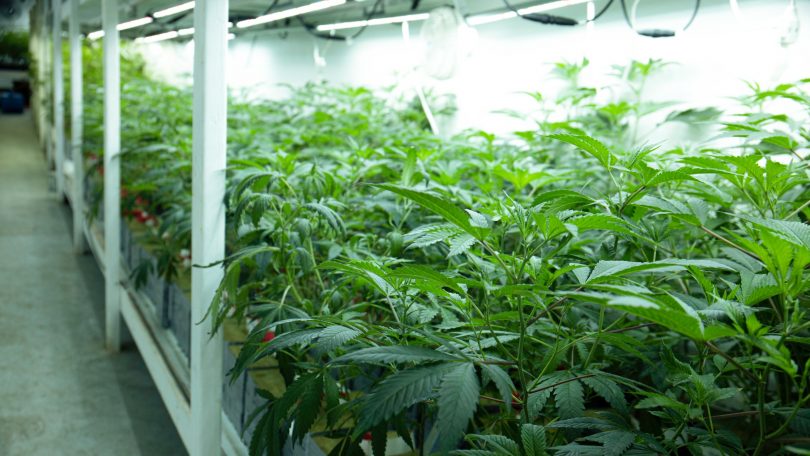The smell of cannabis comes from its terpene profile. Terpenes have very distinct and often strong odors, and the collective odor of a given plant is one way many consumers choose which types of flower they want to consume. The strong aromas from terpenes may be well-liked by many consumers, but odor is an ongoing concern for cannabis grow facilities that must follow local city and state regulations regarding odor output. For this reason, many facilities utilize different odor scrubbing techniques to reduce and eliminate the strong odors of the cannabis being cultivated.
Urban-Gro offers a trademarked odor scrubbing technology called Element Air™. It “utilizes broad spectrum, high-intensity UV [ultraviolet] lights targeted on a hydrated quad-metallic catalyst.” The technology generates hydro-peroxides, hydroxides, and super oxide ions from ambient moisture. These propel through the facility and oxidize microbes and odor molecules, then converting back into oxygen and hydrogen.
Byers Scientific offers odor mitigation services that involve patented vapor-phase systems using waterless vapor technology where “vapor meets odors in the air and neutralizes them on contact.” This involves a third-party “plant-based broad-spectrum neutralizer” that works via Van der Waals forces and electrostatic bonding. They also have a trademarked MT-6™ Molecular Filtration System that involves scrubbing odors at a molecular level by using “carbon to manifest adsorption as the odorous air is filtered.” Coconut shell carbon media traps the aroma molecules. Carbon filters may be the most common solution for cannabis cultivators.
Another company, OMI Industries, implements Ecosorb®, which uses plant-based products delivered through perforated pipes to break down and neutralize odor molecules. Their atomization system adds water which is sprayed into the air.
Agriair® is one of the few companies that integrates a woven medical grade high-efficiency particulate air, or HEPA filter into its odor mitigation system for particulate removal. This pairs with UV lights and optional ionic oxidation (note the aforementioned example from Urban-Gro).
Other ways to mitigate odor include ozone and negative ion generators. Ozone systems use oxidation, where they introduce oxygen atoms to the environment that transfer to the odor molecules, changing their molecular composition; however, inhaled ozone can damage our lungs. Negative ion generators emit negatively charged ions that cause particles to take on negative charges, which then attract positive particles that clump together and fall from the air; however, the EPA notes these are ineffective for odors.
The decision for choosing which odor removal process is right for your cultivation facility often comes down to price and practicality. Once you understand the science behind the most effective options, you can narrow down the best odor mitigation process for you.








